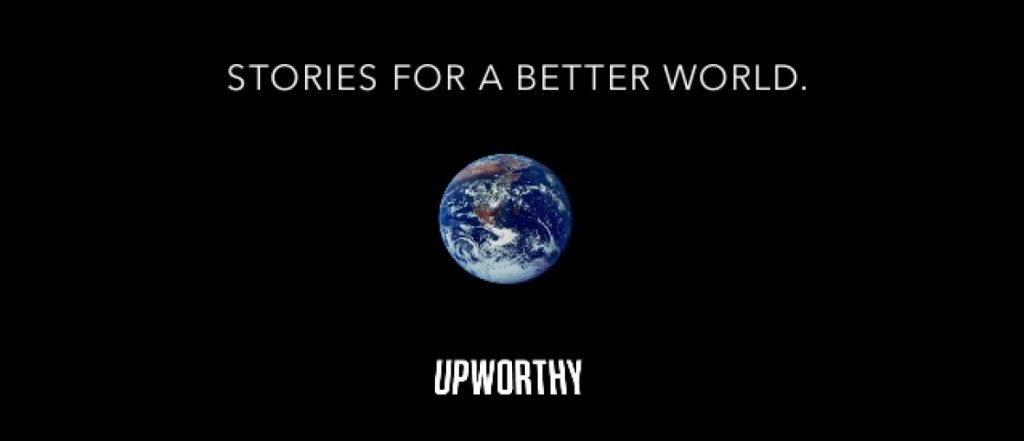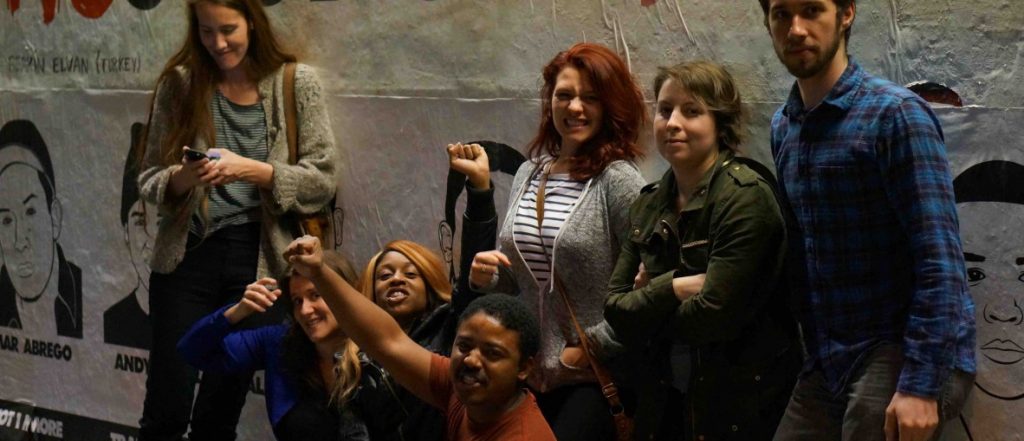In just three weeks, the call to take the Confederate flag down from the grounds of South Carolina’s capital went from a hashtag and an e-petition to conclusive legislative action. Last week’s vote by the state legislature was the result of many converging forces and trends: the rise of a new generation of Southern elected officials more attuned to the needs of global commerce than local tradition; the increasing sensitivity of many American corporate leaders to social issues; the frequently demonstrated capacity of modern social justice movements to attack and damage corporate brands using digitally-powered campaigns; and the emergence of a much more robust, youth-driven and leaderful civil rights movement powered by networked media.
Beneath the surface, a big shift is underway. Voices long ignored and issues long marginalized are forcing their way into the larger mainstream, changing the very meaning of what is mainstream in the process. And this isn’t because the number of police killings of blacks has suddenly increased, or the number of state-sanctioned Confederate memorials suddenly jumped, producing more protest. The wounds of white supremacy in America remain as hurtful and unhealed as before today. But after more than a decade of life in the Networked Age, where open and connected media is almost ubiquitous, the long-standing imbalance in American public life around race and gender is inexorably being reset.
An almost hydraulic force is at work. In the same way that the underground water table punches through the earth’s surface wherever the ground gets more permeable, the undercurrents of America’s less powerful classes are finding their release through the new open media system fostered by the internet, even as they remain less visible on legacy media and in corporate suites. As Dante Barry, the co-founder and executive director of Million Hoodies for Justice said at Personal Democracy Forum a month ago, “The open internet puts the pop in popular uprising. Popular uprisings require a platform that allow the many to speak to the many, all at once…the potential of the internet is in decentralizing who can drive governance in this country.”
Online, we can see the surge. In 2012, the membership of Color of Change, the leading online organizing group focused on racial justice, grew by 4.8 percent; in 2013 it grew by 3.8 percent. In 2014, it grew a whopping 38 percent. Now, says its executive director Rashad Robinson, Color of Change has 1.3 million members, and not only are they more actively engaged than in the past, they are also giving more.
MoveOn.org, which has a much bigger and whiter membership base of around 8 million, reports that the two fastest growing petitions in its history, in terms of how quickly they hit half a million signatures, were their recent one responding to the Charleston massacre with a call to take down the Confederate flag across the state, and an earlier one from the NAACP that it elevated after the George Zimmerman verdict in the Trayvon Martin killing. Close to one-third of the people who signed the post-Charleston petition were new to MoveOn.
Says Anna Galland, MoveOn’s executive director, “It feels like the last two years is really one long civil rights moment—with Trayvon as the launch point. If I look at the combination of the Zimmerman petition and this (ongoing) moment around the confederate flag, we’ve added something like hundreds of thousands of new members around our work on civil rights.”
She adds, “Clearly our petition was building on years of organizing and advocacy and groundwork that was laid by groups including the NAACP and others. I see this as one of those moments where an online petition served as an important accelerator—there was an opening, and the widespread outrage online absolutely helped encourage public officials like Mitt Romney and Jeb Bush and the Republican state legislators who promised to introduce legislation to take down the flag.”
Behind the big vehicles of national online campaigns are a penumbra of smaller actions expanding all over the country. A scan of both group’s platforms show literally hundreds of petitions on racial justice issues ranging from ending the veneration of Confederate symbols to demanding police accountability and economic opportunity. And Black Twitter is becoming a major force in nurturing these actions. As scholar Kimberly Ellis puts it, “#BlackTwitter is here to stay and is only growing increasingly more powerful since its emergence in 2009, when the Pew Research Study chose to highlight this phenomenon of overrepresentation of Black usage of Twitter far beyond its representative population in the United States.”
Broadening the Mainstream
To get a sense of how big a shift we are seeing, I spoke to two early African-American online activists, Chris Rabb, who ran the Afro-Netizen email list and blog from 1999 to 2009, and Cheryl Contee, the co-founder (with Baratunde Thurston) of Jack & Jill Politics, a political blog started in 2006 that joined forces with Elon James White’s This Week in Blackness in 2013. At its height, Afro-Netizen had about 10,000 people on its list-serve; Jack & Jill Politics hit about 600,000-700,000 monthly unique visitors at its height. While relatively small compared to the kinds of numbers we see today, both were vital early networking hubs for people of color hungry for meaningful political content online.
Years ago, Rabb told me that he didn’t think African-Americans would take to social networking in the same way that white bloggers were, because they needed to feel safe in sharing their concerns online. And indeed, when Contee and Thurston started Jack & Jill Politics, they both chose pseudonyms (Jack Turner and Jill Tubman, referencing early abolitionists) because it really wasn’t safe at all to be an outspoken black blogger. For Rabb that was somewhat less of a concern because he had a plethora of political connections on Capitol Hill, which in his words “led to a virtuous circle of validation.”
But those days are ending, Rabb and Contee both told me. “More people of color with more perspectives are adding their voices to the fray in an individual manner, not requiring brands, like Afro-Netizen and Jack and Jill Politics,” Rabb says. “What mattered more [back then] was our individual networks. Sharing AfroNetizen content was far more labor intensive,” he adds. Indeed, running Afro-Netizen was so time-consuming that when he started writing his book Invisible Capital—in part inspired by his own experience parlaying his connections into digital capital—he set it aside.
“What enabled me at least to stop using a pseudonym,” Contee says, “was the external validation we began to receive and seeing how large the community became. It became more difficult to represent and organize that community behind a pseudonym and I think others found that true as well.” She adds, “And while I and others like me have experienced some negativity and hacking online, no one has actually been killed or had their careers destroyed yet from speaking up online.”
Rabb points out that the over-representation of African-Americans in terms of mobile phone use, texting and Twitter usage has contributed greatly to the shift. “Now there’s a critical mass of black folk where there’s more of a sense of support, where your voice is not going to be the only voice. There’s some sense of protection and community that didn’t exist ten years ago.” Rashad Robinson of Color of Change agrees, but he puts it slightly differently: “You can be engaged in debate and conversation [online] with people having your back. But it’s not so much about safety as it is about having power.”
Contee and Rabb also both see a bigger culture change underway. Says Contee, “The overall sophistication of users…during the six years in which we ran Jack and Jill Politics has increased dramatically. It’s easy to see the impact of JJP and blogs like it in terms of the way that people talk online and present their opinions—with transparency, boldness, directness, irreverence with few sacred cows.” Rabb concurs, noting, “Now I see so many strong voices from people of color who aren’t necessarily mainstream which is great, and so the mainstream is broadening.”
Up to a point. Rabb, for one, said that he still thinks about when to share something publicly versus only sharing within his Facebook friends circle. “When people express views that press against institutional racism or imperial capitalism,” he notes, “then there’s a real chance of reprisals that can be symbolic, personal, political, and professional.” He adds, “I’m still a black guy who travels and can be found on Google and I don’t want to be killed.”
It would also be a mistake to interpret the success of recent racial justice petitions on MoveOn’s platform as a sign that the larger white liberal community that it enfolds is ready for more systemic change. As Robinson admits, “We test other issues, more systemic issues, with MoveOn members and they just don’t perform well. They can’t go deep on stop-and-frisk or systemic racism,” he says of his MoveOn allies. He adds, speaking of the white liberal-left, “#TakeItDown is a victory but are we any closer to those people talking about the funding model for public education? Or really pushing for voting rights legislation? Or addressing the funding models in our cities around criminal justice?”
The question of what comes next as the symbolic power of Confederate culture melts down remains hanging in the air. On the one hand, it’s really a change when a Republican governor like Robert Bentley of Alabama preemptively orders his state to stop hoisting the Confederate flag and declares, “A flag is not worth a job.” (Recall the late George Bush adviser Lee Atwater, who memorably described the GOP’s southern strategy as going from shouting “n—-r, n—-r” to more abstract stuff like “state’s rights” and cutting taxes, but with the same racist intention.) On the other hand, as Robinson points out, “We win on the Confederate flag but then we have a bunch of really bad jobs for black people in the South. So we’re working on campaigns on Walmart and the auto plants in the South.”
To be sure, fights on economic issues are much harder than flag wars. But I can’t help but think that, like the giant snow farm still sitting in Boston’s Seaport District, the residue of last winter’s massive snowfalls, white America is melting slowly into the ground. There’s a hard core of ice up there in Boston that is still frozen solid, and it’s even got its own micro-climate that keeps refreezing some of the water coming off the top of the heap. But the mass is breaking down, and so are some of the hardest ingrained symbols of white supremacy in America.
To be honest, I never thought I’d live to see Southern states like South Carolina and Alabama move to officially discard their Confederate flags. And yet, the day is here.







 is terrifying, nor because I was disappointed in myself because I lost my cool, and created an extreme, unbridgeable divide between our viewpoints by invoking the Holocaust. No, this conversation was most terrifying because these people were not bad people. They were the type of people I appreciate: good, kind, hard-working people who love their kids and their family.
is terrifying, nor because I was disappointed in myself because I lost my cool, and created an extreme, unbridgeable divide between our viewpoints by invoking the Holocaust. No, this conversation was most terrifying because these people were not bad people. They were the type of people I appreciate: good, kind, hard-working people who love their kids and their family.